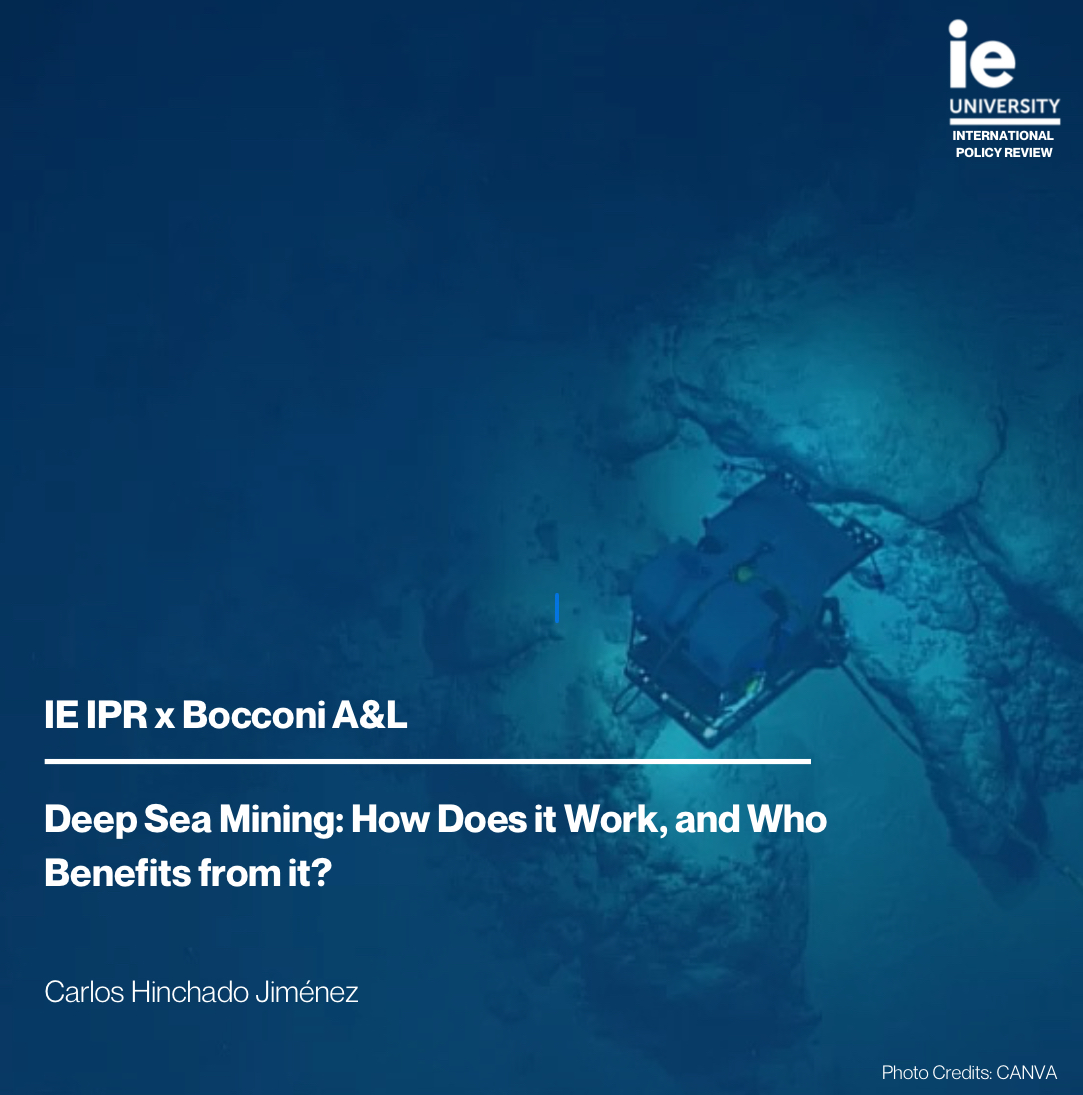
30 Jun Deep Sea Mining: How does it work, and who benefits from it?
Carlos Hinchado Jiménez
IE IPR, IE University, Madrid, Spain
E-mail: chinchado.ieu2023@student.ie.edu
Abstract
This article reviews the main regulations that states need to follow in the environment of international law while it also explains why nations need to collaborate with global entities such as ISA that work as a mediator by balancing between accessibility permitted and ensuring that every state has the same chance for exploring and exploiting these resources that lie in the seabed. As the article continues, we will see a comparative analysis between the different stakeholders and how these relations work. We will also delve into the CHM doctrine and why it clashes with the strongest and most technological states that usually focus on their national interests and how they apply different strategies for dodging the laws established. Lastly, the article will end up with policy recommendations that could help to restore the equality between states and the correct compliance of these principles.
READ THE FULL ARTICLE HERE (Page 30-40)
Keywords: Deep-Sea Mining, Sovereignty, Common Heritage of Mankind, International Law, UNCLOS

Sorry, the comment form is closed at this time.